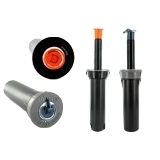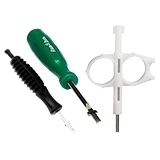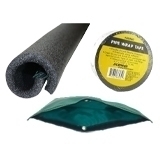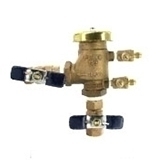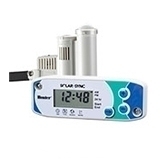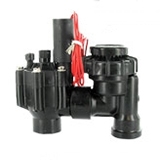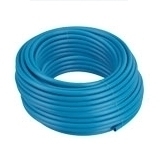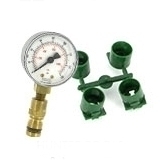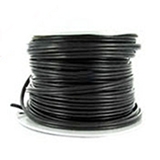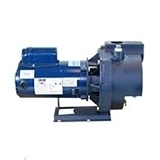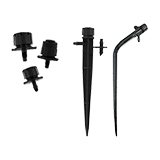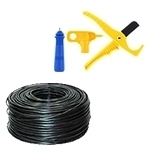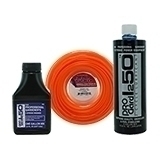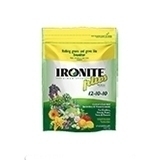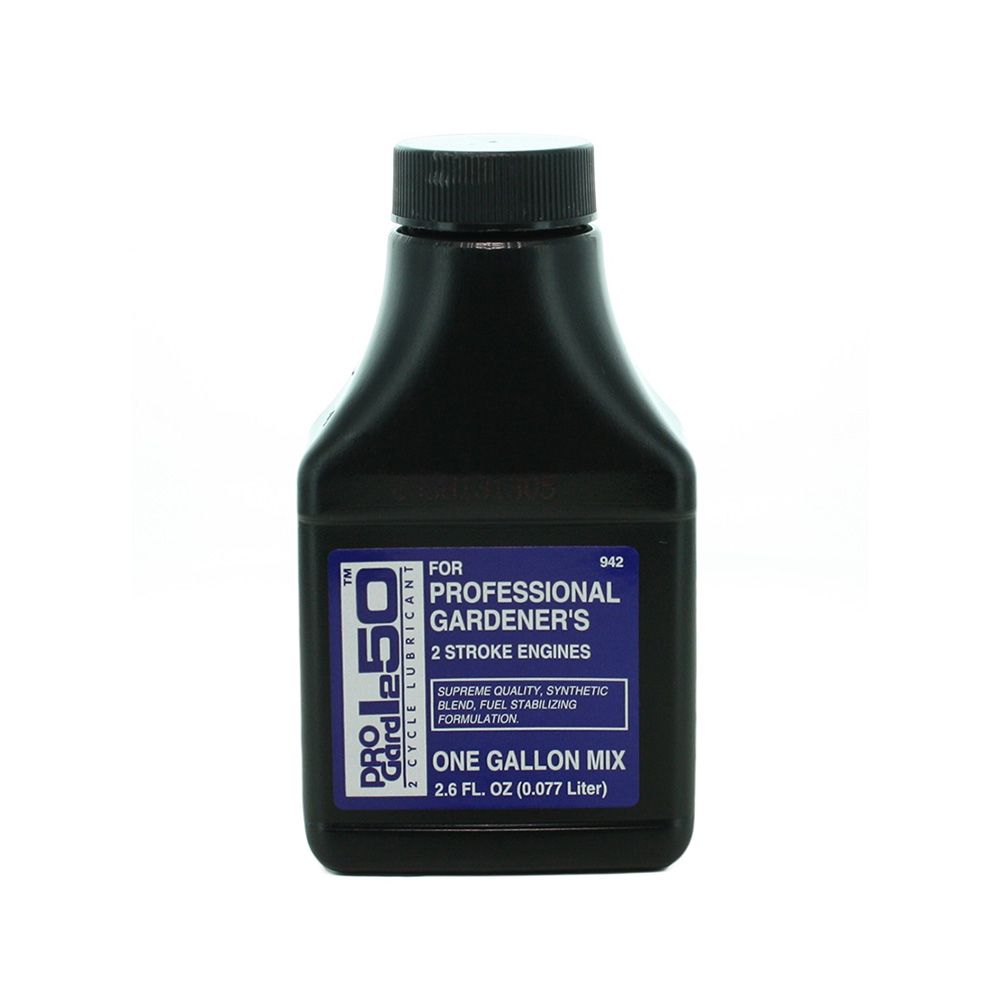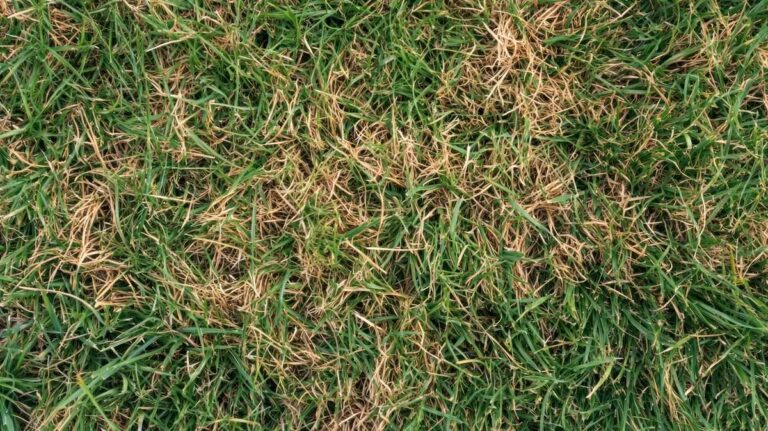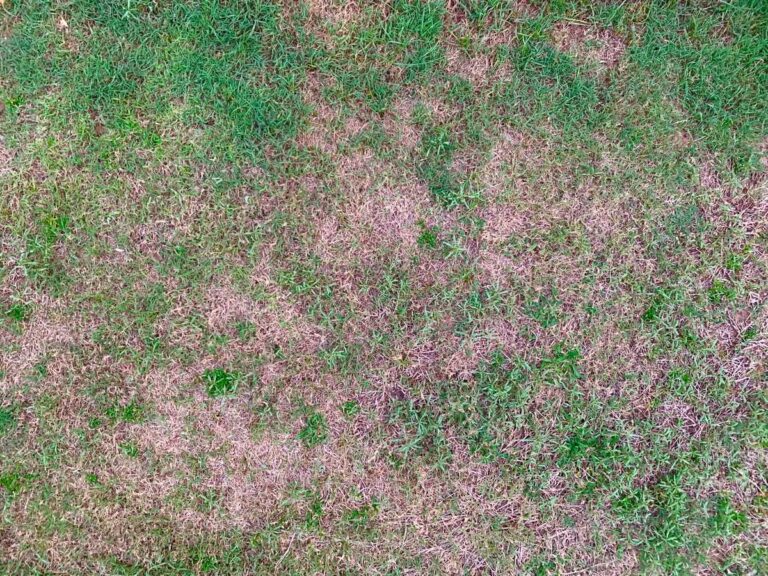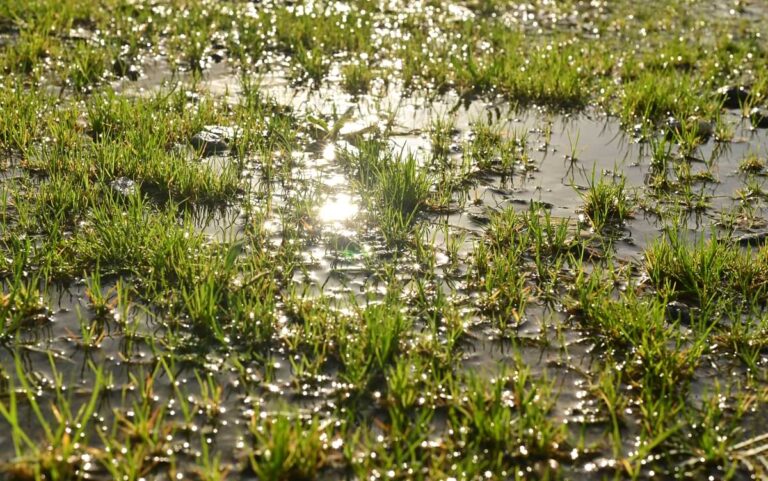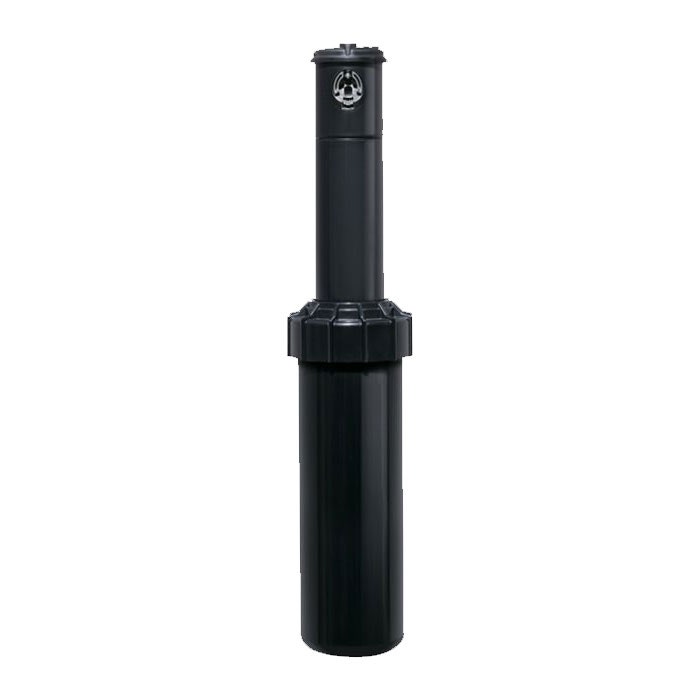Table of Contents: Lawn Overwatering
Preventing Lawn Overwatering
Lawn overwatering can silently turn a lush, green dream into a soggy, yellowing mess. Grass may feel spongy underfoot, puddles may form in low spots, and a faint musty smell can linger after watering.
Recognizing these signs early can save your lawn and help you maintain a healthy, vibrant yard that’s firm, green, and thriving. Let’s explore the common signs for lawn overwatering and tips to avoid it.
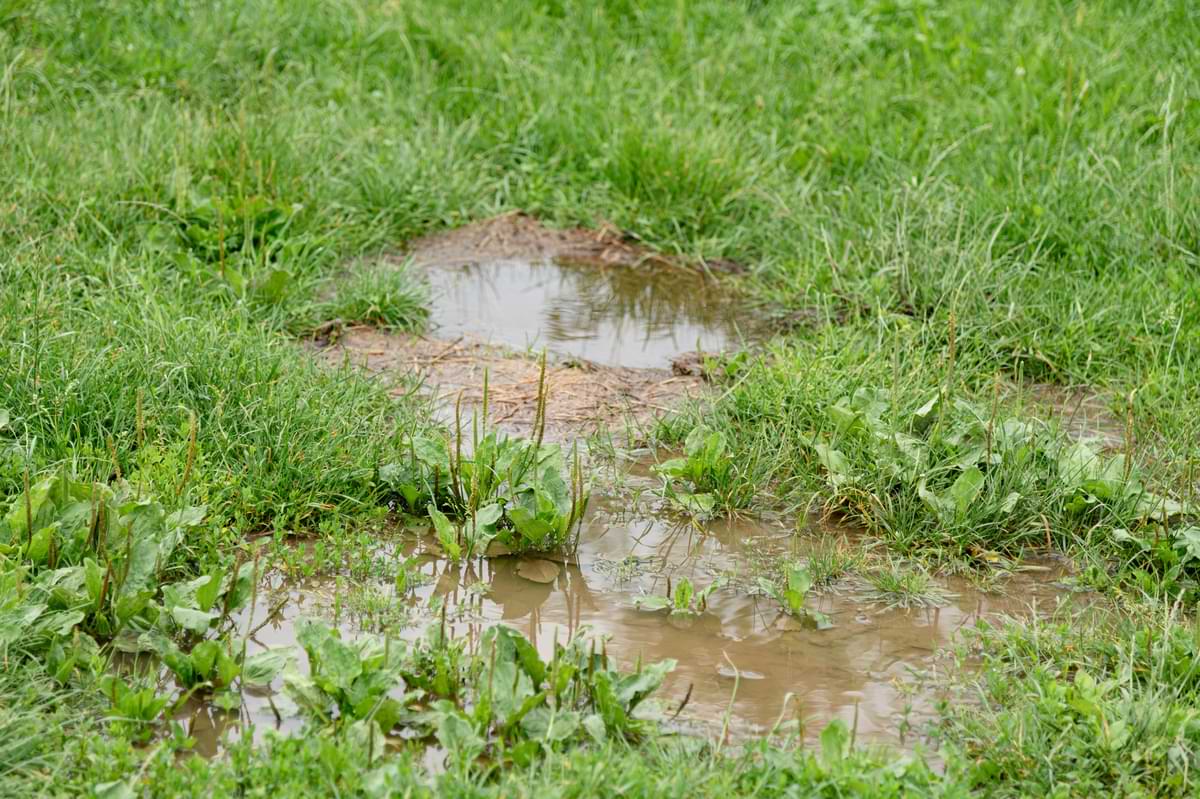
What Are Common Signs of Lawn Overwatering?
Overwatering your lawn can be just as damaging as drought. Here are the key signs—yellowing grass, soggy soil, fungal growth, and more—so you can keep your lawn healthy and vibrant.
Puddles or Standing Water
One of the most obvious signs of overwatering is visible puddles or consistently soggy areas. If your lawn feels like a sponge when you walk on it or water takes hours to soak in, your soil is saturated. Overly wet soil prevents oxygen from reaching the roots, which can suffocate the grass and encourage fungal growth.
Yellowing or Wilting Grass
It might seem counterintuitive, but overwatered grass can actually turn yellow or start wilting. Excess water dilutes essential nutrients in the soil, particularly nitrogen, leaving your grass looking pale or sickly. Wilting can occur when roots are damaged and can’t absorb nutrients properly, even though the soil is wet.
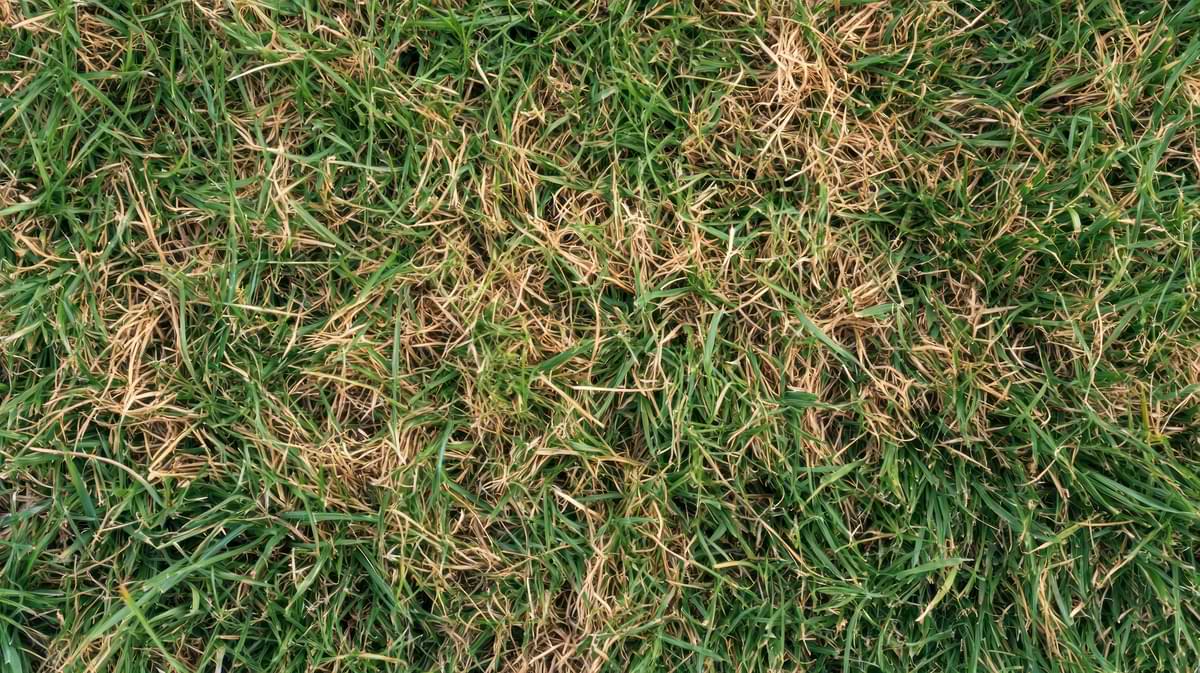
Fungal Growth and Lawn Disease
Overwatering creates the perfect environment for fungi and other lawn diseases. Common problems include brown patch, dollar spot, and moldy areas on the grass. You might notice white, gray, or brown patches forming on your lawn, especially in warm, humid conditions. If you spot these, it’s a clear sign your lawn is receiving too much water.
Soft, Spongy Lawn
Healthy grass should feel firm underfoot. If your lawn is soft, muddy, or spongy, it indicates the soil is waterlogged. Excess moisture not only weakens the root system but also encourages weeds that thrive in wet conditions, such as crabgrass or nutsedge.
Slow Growth or Thinning Grass
Too much water can stunt grass growth rather than promote it. Overwatered lawns often grow slower than usual or develop thin, weak patches. This happens because roots fail to penetrate deep into the soil, leaving grass dependent on surface moisture and vulnerable to drought.
Insect Infestations
Certain pests, such as fungus gnats or mosquitoes, are attracted to wet soil. If you notice an uptick in insects around your lawn, it could be linked to overwatering. These pests can further stress your grass and create additional lawn care challenges.

How Can You Prevent Lawn Overwatering?
Overwatering is often caused by good intentions, but smart tools can make lawn care easier and more precise. They take the guesswork out of watering so your lawn gets just the right amount of moisture it needs.
Here are a few ways that common devices help stop wasted water:
- Irrigation Controllers: Irrigation controllers allow you to set customized watering schedules, ensuring your lawn only gets the amount it needs at the right time of day.
- Hose Timers: Great for smaller yards or hose-end sprinklers, hose timers automate shutoff so you don’t forget and accidentally drench your grass.
- Soil Moisture Sensors: Soil moisture sensors measure the actual moisture level underground and prevent irrigation systems from running when the soil already has enough water.
- Rain Sensors: Rain sensors automatically pause watering after rainfall, avoiding unnecessary cycles that can flood your lawn.
Avoid Lawn Overwatering for a Strong, Healthy Yard
Caring for your lawn doesn’t mean watering more—it means watering smarter.
By recognizing the signs of overwatering and using tools that keep moisture levels in check, you can protect your grass from disease, conserve water, and promote strong, deep roots. A balanced approach ensures your yard stays green, healthy, and beautiful all season long.
FAQs for Lawn Overwatering
How to fix an overwatered lawn?
Start by cutting back on watering and giving your lawn time to dry out. Aerate the soil to improve drainage and break up compacted areas, which helps roots breathe. Remove excess thatch and dead grass, and keep an eye out for fungal issues or pests that thrive in wet conditions. Reseeding thin patches may also help restore a healthy, vibrant lawn.
What does grass that is overwatered look like?
Overwatered grass often shows yellowing or pale blades, even when soil seems wet. The lawn may feel soft or spongy underfoot, and areas can stay soggy long after watering. You might notice slow growth, thinning patches, or signs of fungal infections such as brown spots or a white, powdery coating. These visual cues help identify problem areas before serious damage occurs.
What happens if your grass gets too much water?
Too much water can suffocate grass roots by depriving them of oxygen, making it difficult for the lawn to absorb nutrients. This creates weak, shallow roots that are more prone to disease, weeds, and fungal growth. Over time, excessive watering can stunt growth, cause yellowing or wilting, and leave your lawn patchy, muddy, or unhealthy, undermining the vibrant green look you want.
If you want to stay up-to-date on the latest Sprinkler Warehouse news and make the most of all of our one-of-a-kind promotions, join the Irri-Gator community today. Happy watering, Irri-Gators!



